Best
Xylophone for Beginners
Xylophone by Gear4music Everything You Need
-
Overall: Chromatic half soprano xylophone
-
Best Feature: Three chamber wooden box
-
TedScore™: 8/10
Best
Overall
Xylophone
-
Overall: Padauk wood bars produce a natural mellow sound and feel
-
Best Feature: Recognized for its sturdy build and top-notch materials
-
TedScore™: 9/10
Best
Glockenspiel for Beginners
-
Overall: Finely tuned metal bars
-
Best Feature: Chromatic half soprano glockenspiel
-
TedScore™: 8/10
Who knew amid a heated debate about Xylophone Vs. Glockenspiel could be the dynamic duo of the mallet percussion world. The mix-up between these pitched percussion instruments is as common as mistaking chips for crisps.
As a percussion player, I’ve cherished the warm, earthy notes of a xylophone’s wooden bars and marveled at the glockenspiel’s bright, metallic twinkle.

This article will help you understand the differences between these two instruments, giving you that “aha” moment when you can finally tell them apart.
Continue reading, as I assure you, it will be a fun journey into the world of mallet instruments—one that will have you recognizing their unique sounds the next time you hear a catchy tune!
Physical Characteristics and Material
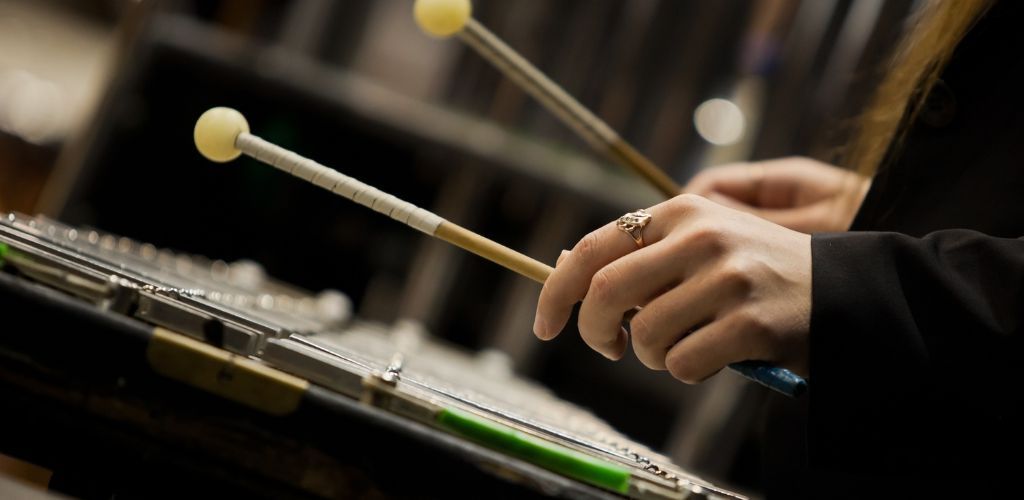
When I ponder the xylophone and the glockenspiel, their construction strikes a note with me. Both are wonders of musical craftsmanship, each boasting unique materials that give them their characteristic sounds.
Composition of Xylophones
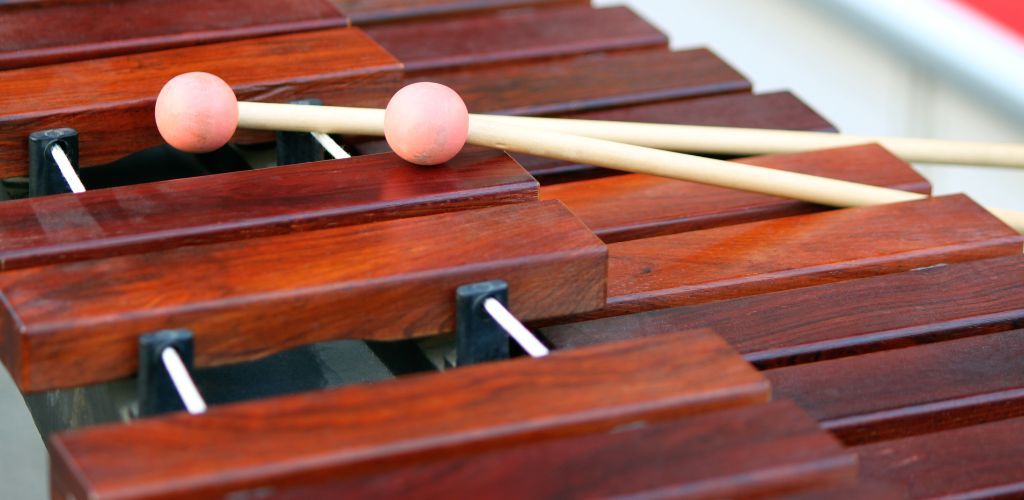
My favorite thing about xylophones is their wooden bars. Crafted from rosewood or synthetic alternatives like fiberglass, the bars are the heart of the xylophone’s warm, resonant tone.
Beneath these bars, you’ll often find a series of resonators – usually tubes made of metal or plastic – which amplify the sound, making it as rich as a chocolate cake.
Glockenspiel Construction

Let’s chat about the glockenspiel, which sings a different tune.
The name hints at the use of metal; the keys are crafted from steel bars or metal plates, creating a bright, shimmering sound as crisp as the morning frost.
Arranged on a keyboard setup similar to the xylophone, the metal bars are smaller and higher in pitch, lending the glockenspiel its distinctive, bell-like clarity that can cut through any musical ensemble.
Playing Technique and Sound
When I’m exploring the art of percussion, I can’t help but be enchanted by the distinctive techniques and sounds of the xylophone and glockenspiel. It’s like they’re speaking with their musical accents—so let’s get right into the nuances, shall we?
Mallet Types and Their Impact
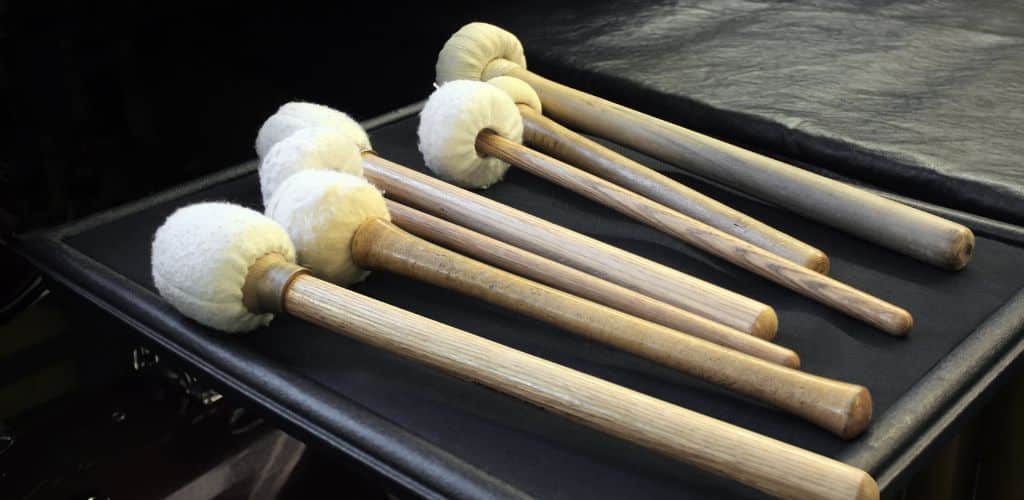
Choosing the right mallet is akin to a painter selecting the perfect brush. It’s fundamental in creating the desired sonic palette.
Rubber mallets are commonly used in percussion to produce a softer and warmer sound than other mallets. When playing the xylophone, two mallets are typically used to strike the instrument’s bars simultaneously, allowing for more complex and dynamic musical expression.
On the flip side, the glockenspiel sings beautifully under the touch of metal or very hard plastic mallets, offering a piercing clarity that cuts through the orchestra’s texture.
The choice of mallet material directly influences the harmonics and overtones.
Expect a warmer tone with less sustain.
Await a crystal-clear pitch with more pronounced high harmonics.
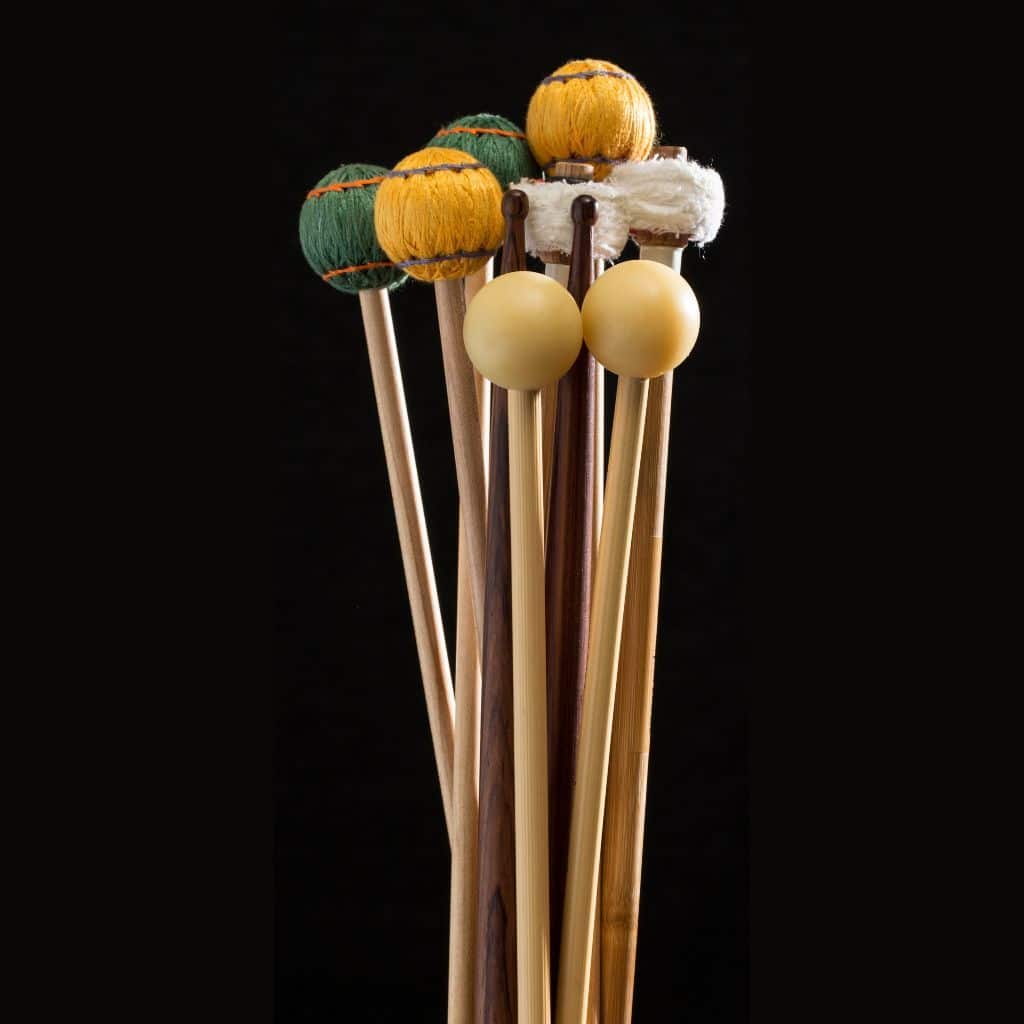
Resonance and Sound Quality
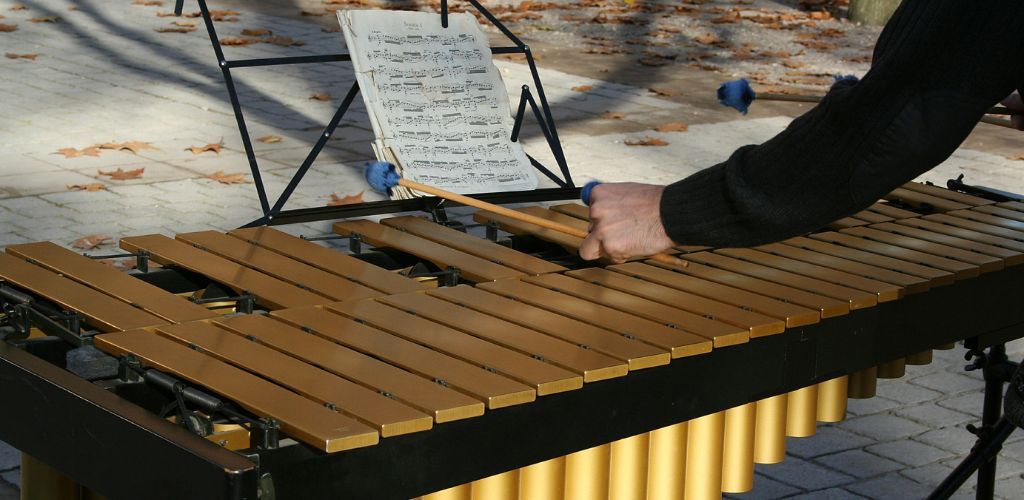
Every whirl I take with the mallets, I’m always struck by the sheer vibrancy of these instruments.
The xylophone delights with wooden sound bars over resonator tubes; each tuned precisely to a musical scale. Its shorter sustain gives each note a precise punch that livens up the rhythm.
It’s like tapping into a musical conversation brimming with potency!
With its metal bars, the glockenspiel reminds me of bells, boasting a higher pitch and a marvelously long sustain. The bright, tinkling timbres often remind one of a carillon dancing in the breeze.
With resonators of their own, these tiny beauties produce a sound that’s not just ringing; it’s positively sparkling. They gleam in the high range of the orchestra, making them a darling of composers and listeners alike.
Use in Performance
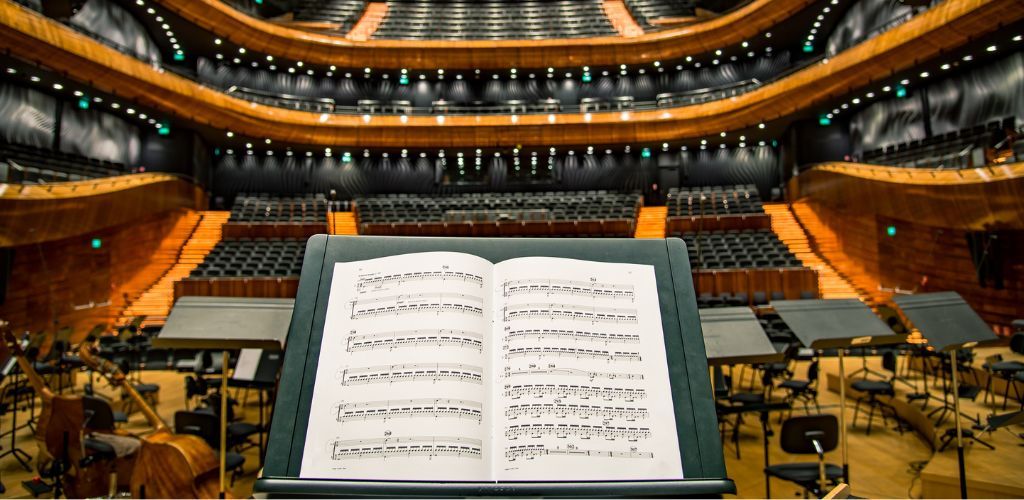
I always marvel at each instrument’s unique role when I stroll into a grand orchestral setting or a lively band rehearsal. Let’s spotlight our melodious friends — the xylophone and glockenspiel — and how they add their distinct sparkle and charm to musical performances.
Ensemble Roles

In an orchestra, the xylophone and glockenspiel are part of the percussion family, playing roles as intriguing as they are vital. These instruments often punctuate the music with bright, incisive tones, adding texture and color.
In rock and pop bands, the glockenspiel can weave a silvery thread of notes through the melody, often providing an ethereal, almost magical touch. It’s not unheard of for a xylophone to make a cameo, significantly to add a whimsical or playful character to a tune.
Solo and Ensemble Repertoire

Solo pieces for the xylophone are bursting with energetic rhythms and are quite a treat — imagine fast-paced mallets dancing across wooden bars.
Glockenspiel solos, or concert bells as they’re also known, typically showcase higher, jeweled notes that can make you think of stardust sprinkled over the music. The glockenspiel’s metal plates chime in with delicate precision.
In ensemble repertoire, both instruments often share a kinship with the vibraphone and xylorimba, creating a fascinating keyboard percussion quartet that is both versatile and delightful to the ear.
Historical Background and Origins
Keyboard percussion instruments encompass a wide range of instruments such as the xylophone, marimba, and vibraphone, despite being classified under the same instrument family.
Having a nosy into the lineage of musical instruments is like time-traveling. I’m chuffed to take you on a journey through the history and beginnings of the xylophone and glockenspiel.
Xylophone Lineage
The xylophone’s ancestors have been knocking about since ancient times, stirring the air with their melodious clatter.
It’s believed that this instrument has roots in Africa, with a dash of influence from Southeast Asia. Older cousins of the xylophone include the balafon and marimba, which are steeped in rich cultural traditions.
Folk across the pond in Africa might have cobbled the first xylophones together using wooden bars laid over gourds or hollowed-out logs.
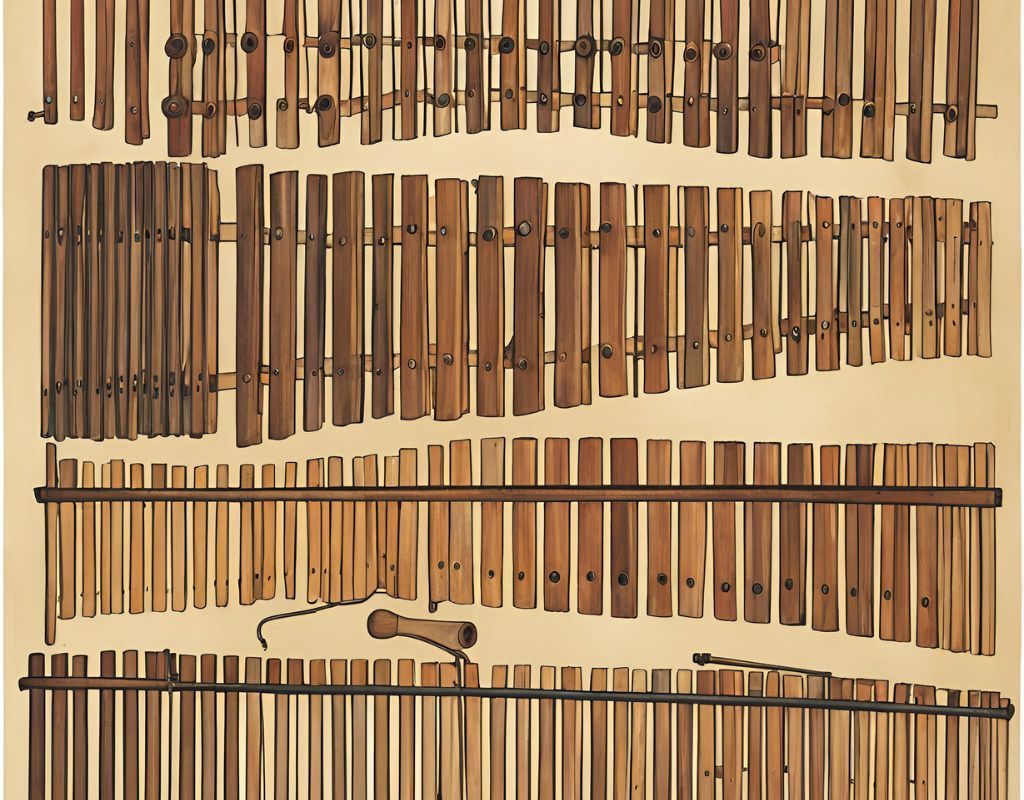
Glockenspiel Development
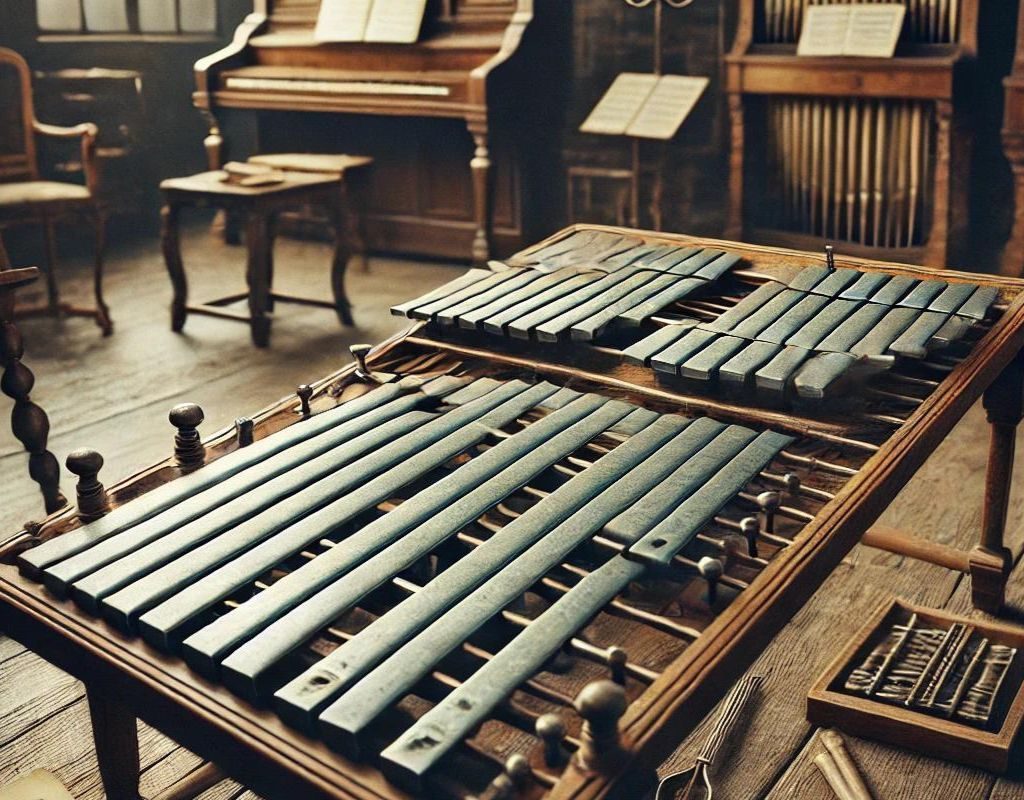
The glockenspiel is a bonny little thing with its shiny metal bars and tinkling sounds.
The word glockenspiel is a hearty nod to its German heritage, translating to play of bells. Indeed, it evolved from the semantron and the lyre, first sprouting up in Germany around the 17th century.
Commissioned initially by churches, the glockenspiel’s bell-like tones were used to echo the peals from steeples, and each bar would sing out a note as clear as a crystal in a French carillon.
Xylophone Brands Recommendation
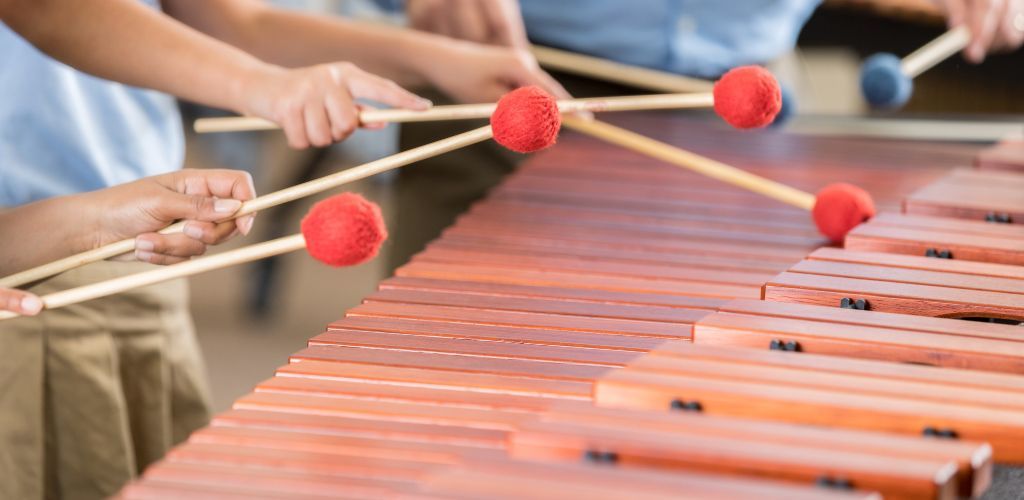
If you’re looking to purchase a Xylophone, then the three models I have recommended to my students are:
Soprano Xylophone by Gear4music
As a musician, I find the Soprano Xylophone by Gear4music to be an outstanding instrument with its bright, clear tones and sturdy build, making it perfect for both practice and performance.
Soprano Xylophone by Gear4music
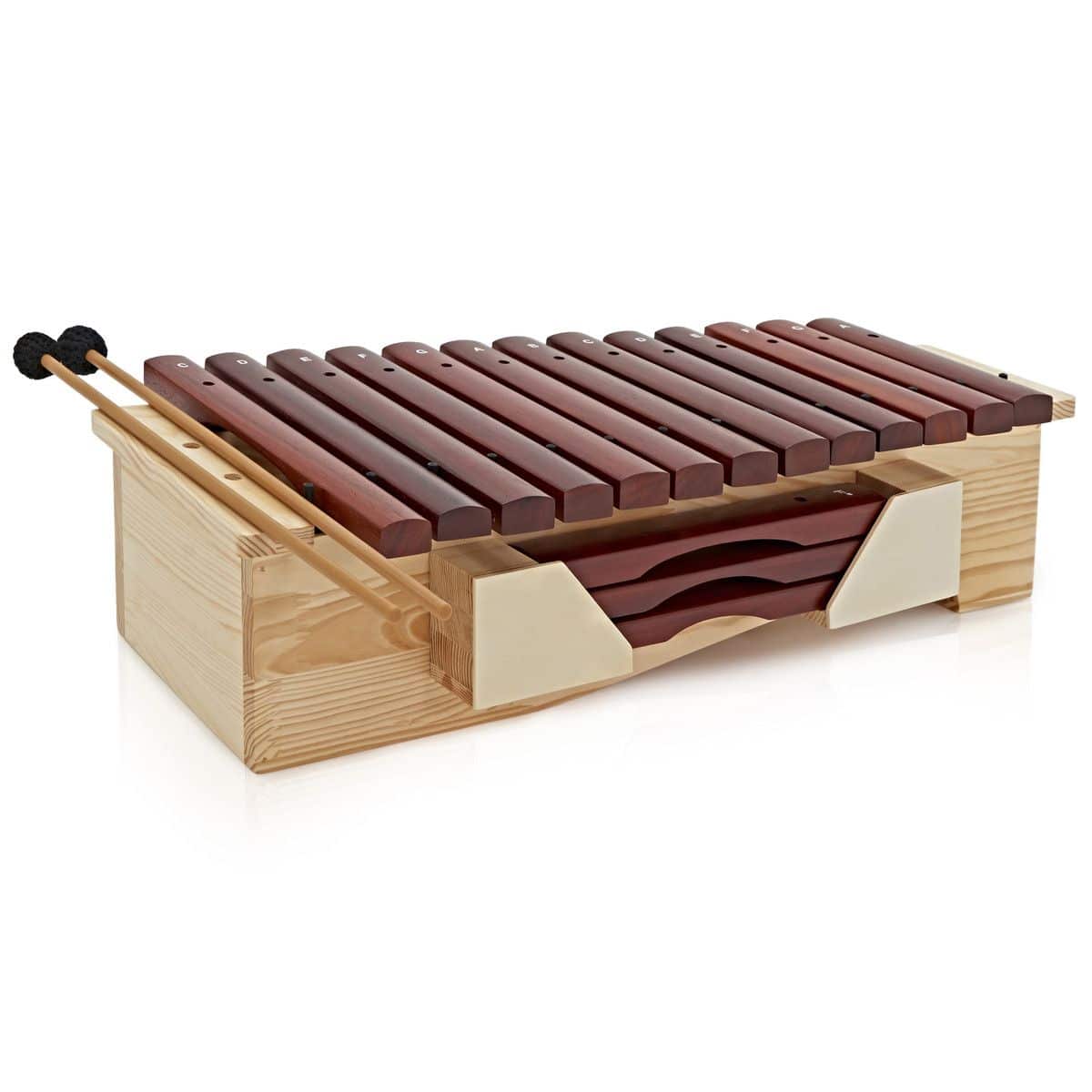
FEATURES: Chromatic half soprano xylophone
OTHER INFO: Three chamber wooden box
- Includes beaters and spare bars
- The smaller bars result in a lower-quality tone and reduced dynamic range
When you click ‘Check Price’, you’ll see there are loads of great places to buy this item. Our personal favorite is Sweetwater for the US, and Thomann and Gear4Music for the UK & Europe.
They are the largest music retailers, with excellent customer service, competitive prices, really fast shipping, and the longest guarantees.
The professional musician who wrote this article combined many things,
from the product build, manufacturer’s reputation through to feedback
from other users, to create our famous TedScore™.
Olympic Orchestral Xylophone
As a reliable choice for orchestral performances, I have always been impressed with the Olympic Orchestral Xylophone‘s rich, resonant sound and exceptional craftsmanship.
Olympic Orchestral Xylophone
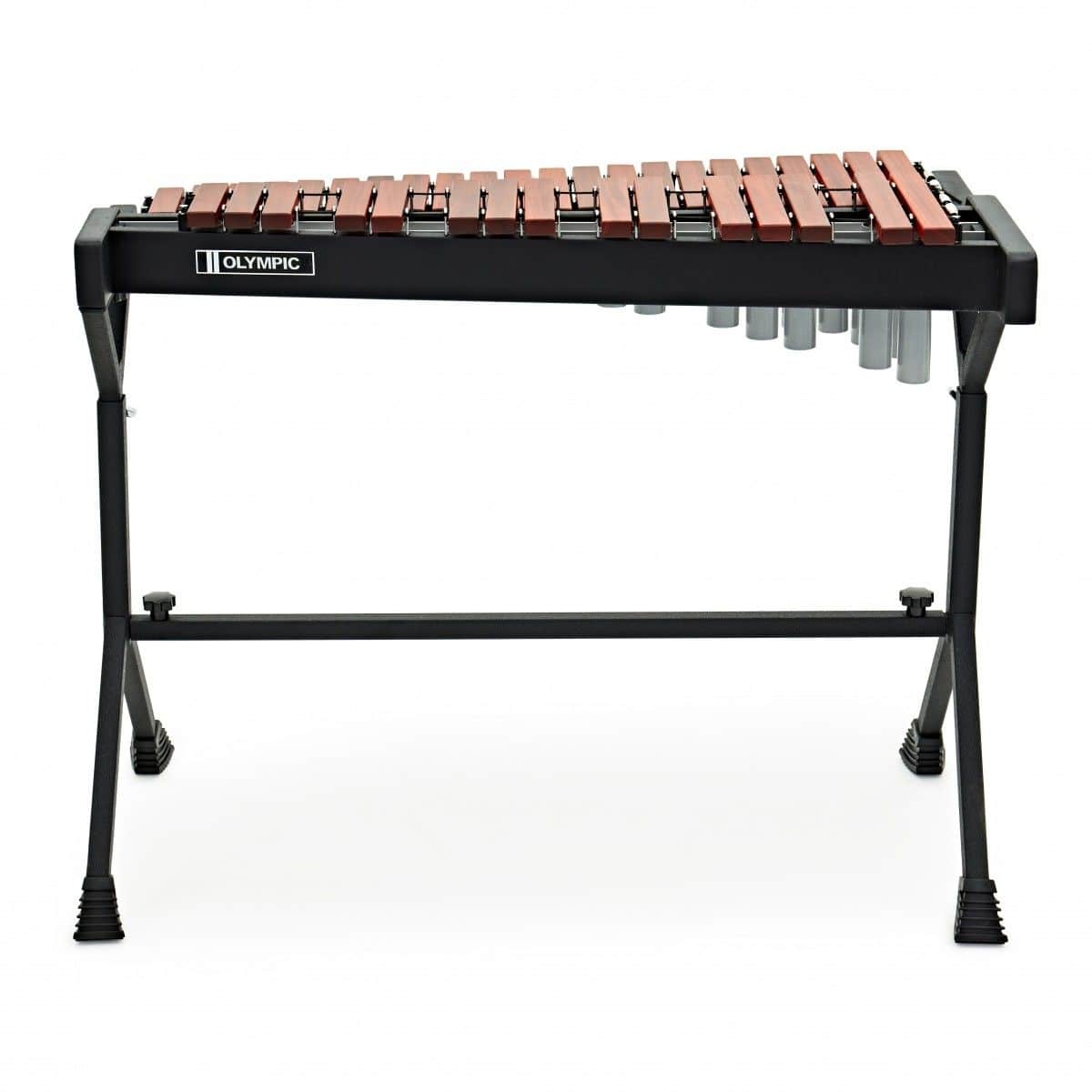
FEATURES: 37 dark wood bars cover a three-octave range - C5 to C8
OTHER INFO: Aluminum tube resonators enhance the tone and sustain pedal
- Complete with a height adjustable stand and a pair of mallets
- Some users may find it challenging to transport due to its size and weight
When you click ‘Check Price’, you’ll see there are loads of great places to buy this item. Our personal favorite is Sweetwater for the US, and Thomann and Gear4Music for the UK & Europe.
They are the largest music retailers, with excellent customer service, competitive prices, really fast shipping, and the longest guarantees.
The professional musician who wrote this article combined many things,
from the product build, manufacturer’s reputation through to feedback
from other users, to create our famous TedScore™.
Yamaha YX35G Xylophone
The Yamaha YX35G Xylophone stands out with its durable padauk bars and precise tuning, delivering a warm, balanced tone that is perfect for both practice and performance.
Yamaha YX35G Xylophone

FEATURES: Padauk wood bars produce a natural mellow sound and feel
OTHER INFO: Recognized for its sturdy build and top-notch materials
- Height adjustable frame provides extra comfort
- Relatively expensive
When you click ‘Check Price’, you’ll see there are loads of great places to buy this item. Our personal favorite is Sweetwater for the US, and Thomann and Gear4Music for the UK & Europe.
They are the largest music retailers, with excellent customer service, competitive prices, really fast shipping, and the longest guarantees.
The professional musician who wrote this article combined many things,
from the product build, manufacturer’s reputation through to feedback
from other users, to create our famous TedScore™.
Glockenspiel Brands Recommendation
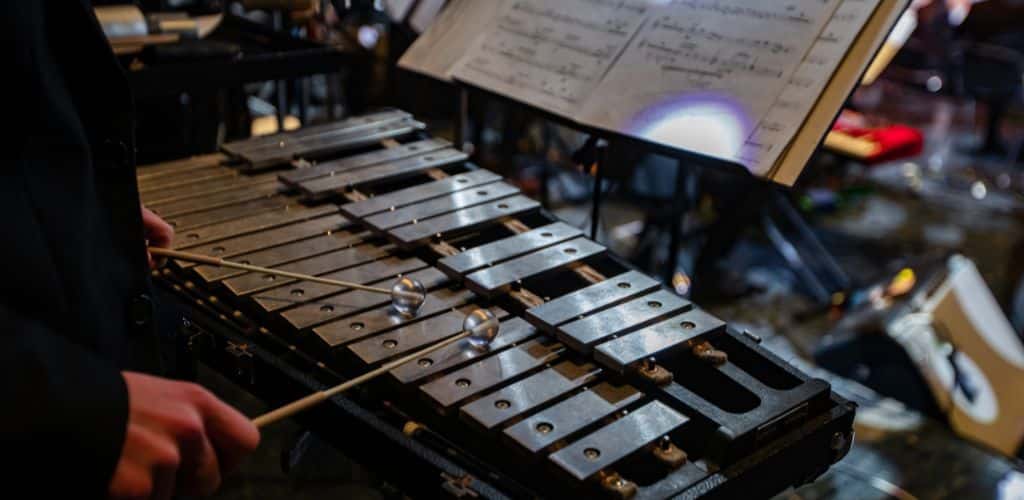
And if you’re looking to buy a new Glockenspiel, you really can’t go wrong with these three suggestions:
Soprano Glockenspiel by Gear4music
The Soprano Glockenspiel by Gear4music offers bright, clear tones and durable construction, making it an excellent choice for beginners and music educators.
Soprano Glockenspiel by Gear4music
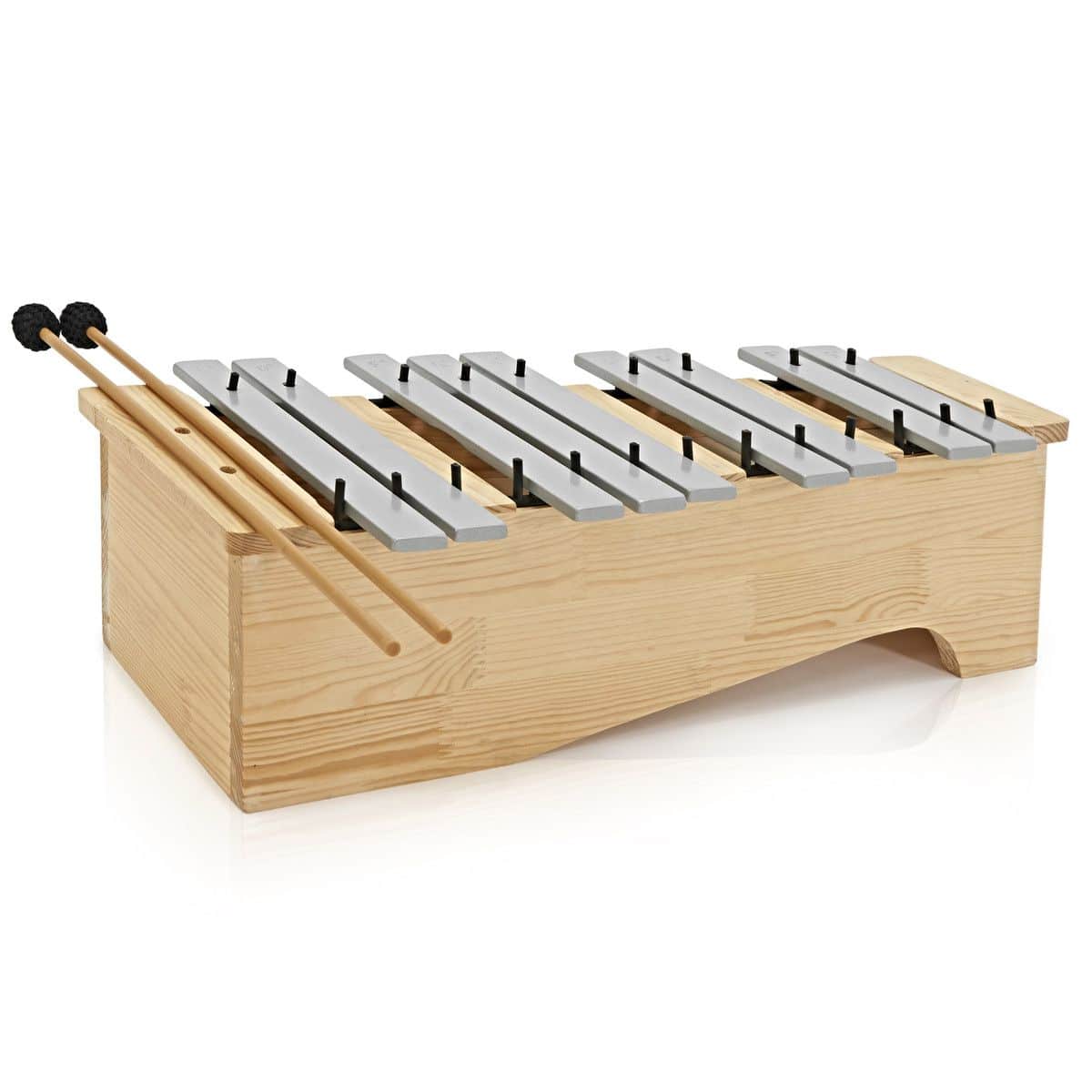
FEATURES: Finely tuned metal bars
OTHER INFO: Chromatic half soprano glockenspiel
- Includes beaters and spare bars
- May not offer as much projection and louder sound
When you click ‘Check Price’, you’ll see there are loads of great places to buy this item. Our personal favorite is Sweetwater for the US, and Thomann and Gear4Music for the UK & Europe.
They are the largest music retailers, with excellent customer service, competitive prices, really fast shipping, and the longest guarantees.
The professional musician who wrote this article combined many things,
from the product build, manufacturer’s reputation through to feedback
from other users, to create our famous TedScore™.
Olympic Soprano Metallophone
The Olympic Soprano Metallophone produces a bright, resonant sound with its high-quality metal bars, making it a reliable and durable choice for both students and educators.
Olympic Soprano Metallophone
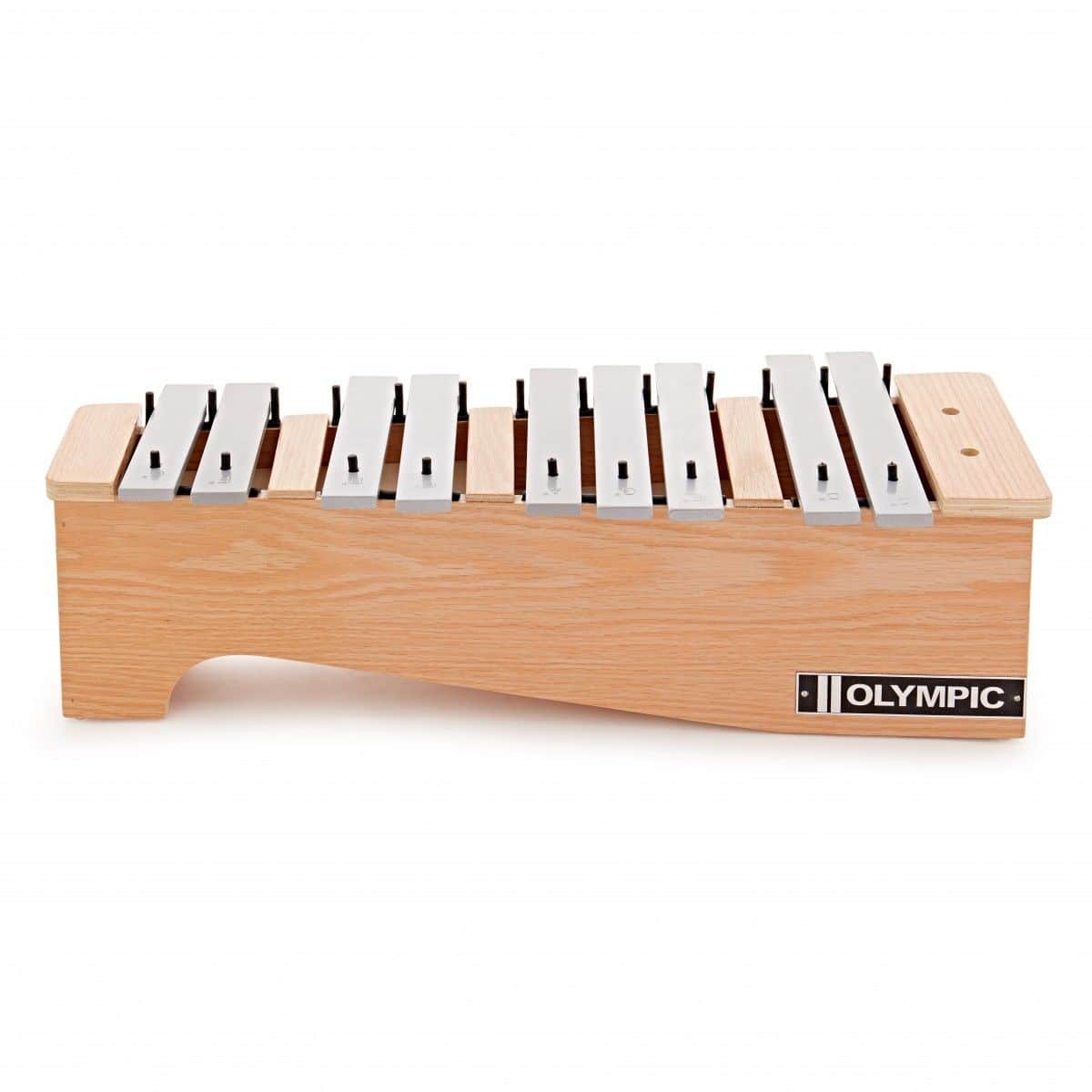
FEATURES: Includes spare note bars to swap and play in keys C, F & G
OTHER INFO: Rubber plate maintains resonance
- Individually labelled bars provide an easy playing experience
- May not produce sound resonant compared to larger metallophone
When you click ‘Check Price’, you’ll see there are loads of great places to buy this item. Our personal favorite is Sweetwater for the US, and Thomann and Gear4Music for the UK & Europe.
They are the largest music retailers, with excellent customer service, competitive prices, really fast shipping, and the longest guarantees.
The professional musician who wrote this article combined many things,
from the product build, manufacturer’s reputation through to feedback
from other users, to create our famous TedScore™.
WHD 32 Note Glockenspiel
The WHD 32 Note Glockenspiel delivers a crisp, clear tone across its extended range, making it an excellent choice for both beginners and advanced musicians.
WHD 32 Note Glockenspiel
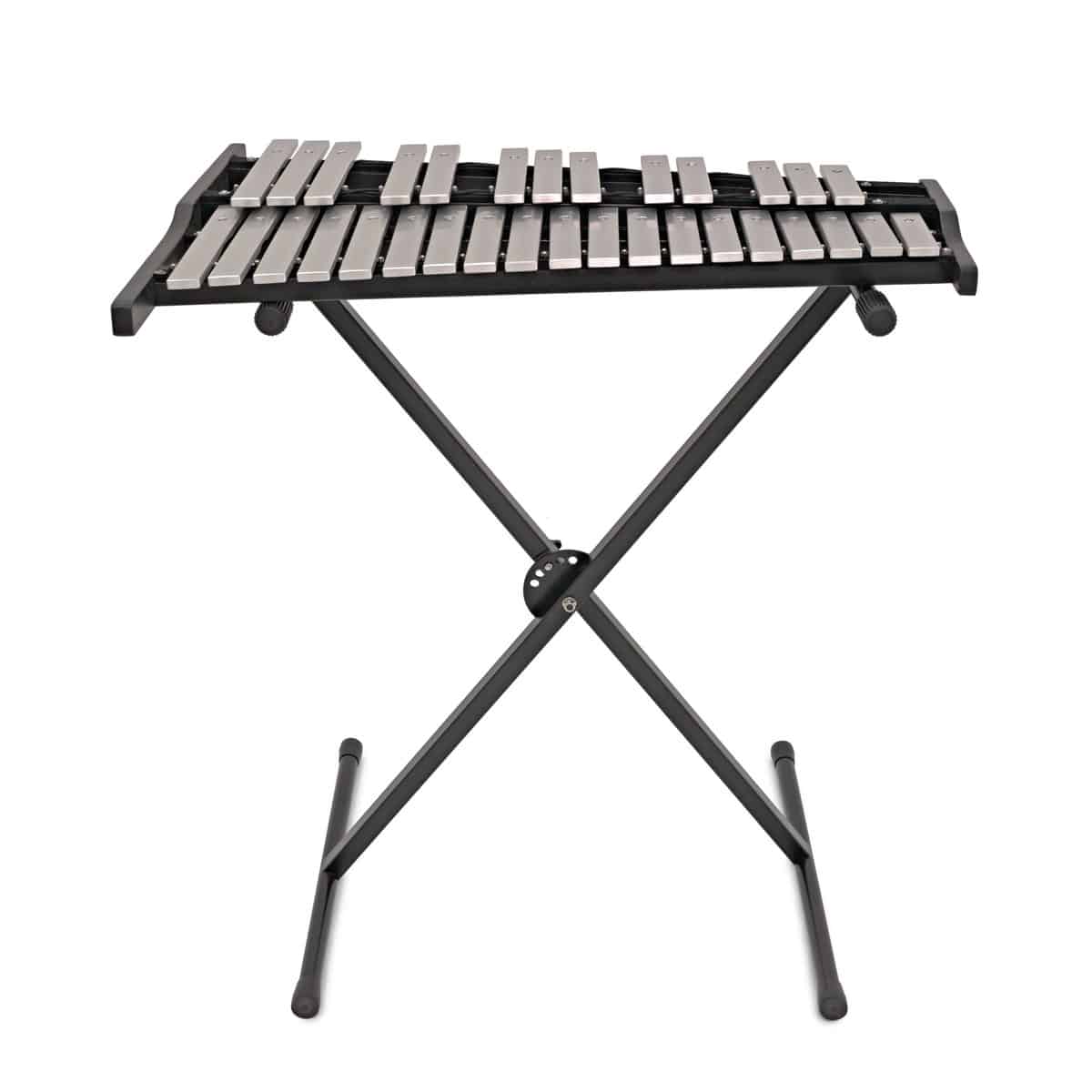
FEATURES: Wide note range of 2.5 octaves for a versatile performanc
OTHER INFO: Provides a broad range of notes, offering versatility for musical expression
- Sturdy build and quality materials for lasting reliability
- Some users may find it relatively heavy and challenging to transport
When you click ‘Check Price’, you’ll see there are loads of great places to buy this item. Our personal favorite is Sweetwater for the US, and Thomann and Gear4Music for the UK & Europe.
They are the largest music retailers, with excellent customer service, competitive prices, really fast shipping, and the longest guarantees.
The professional musician who wrote this article combined many things,
from the product build, manufacturer’s reputation through to feedback
from other users, to create our famous TedScore™.
Xylophone Vs Glockenspiel:
Main Point
The differences between glockenspiels and xylophones are interesting. These captivating musical instrument certainly have their unique sparkle.
Here’s a summary:
Glockenspiel:
Made with steel bars
Produces a bright, metallic sound
Common in orchestras and marching bands
Xylophone:
Made with wooden bars
It offers a warmer, earthier tone
Found in both orchestras and global music scenes
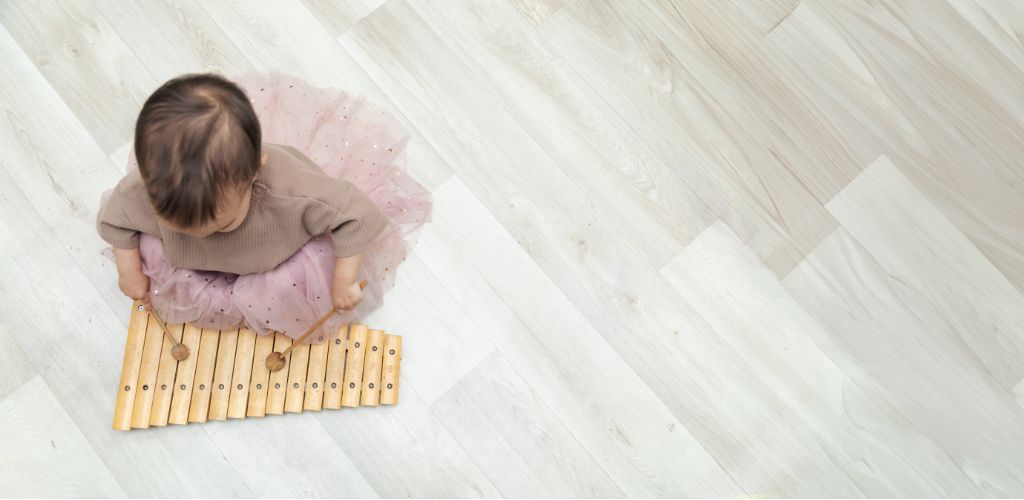
Remember, the material makes a world of difference between these two. A glockenspiel sings with a shimmer, while a xylophone dances with a mellow vibe.
Now, the next time you spot these instruments, you’ll be the one sharing nuggets of knowledge at the concert or amongst chums at the pub.
Cheers to these delightful instruments and their joy to our ears and hearts!
Hold on! Before you go…
Find out about the top five tuned percussion instruments in this helpful article.
FAQ's
The key difference between a xylophone and a glockenspiel lies in the material of their bars, with xylophone bars typically made of wood and glockenspiel bars made of metal. This results in the xylophone producing a warm, resonant sound while the glockenspiel creates a bright, shimmering tone.
No, a glockenspiel is not the same as a marimba. While both are percussion instruments, they have distinct characteristics. The glockenspiel consists of metal bars and produces a bright, high-pitched sound, while the marimba has wooden bars and produces a warmer, lower-pitched sound.
The marimba a similar instruments to the xylophone but bigger. It has a more extensive range and resonators beneath the bars to produce a more profound and warmer sound than the xylophone.
The term “glockenspiel” is derived from the German words “glocken,” meaning bells, and “spiel,” meaning play. This name reflects the instrument’s characteristic bright and bell-like sound produced by metal bars.



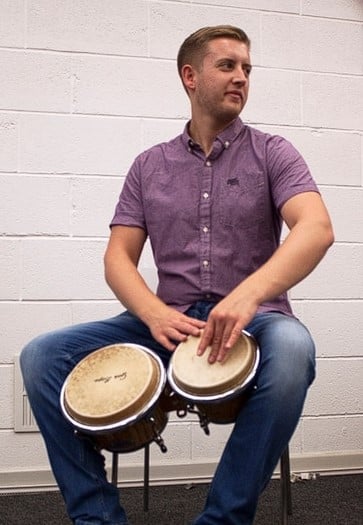






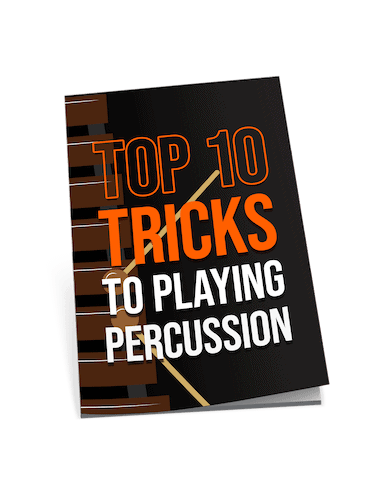
An intriguing exploration into the physical and historical aspects of both xylophones and glockenspiels. However, I would love to see a deeper dive into the specific methodologies of instruction for each instrument. Understanding how to teach these instruments effectively is as crucial as knowing about their construction and sound capabilities. Additionally, a comparative analysis on the learning curve for beginners on both instruments might provide invaluable insights for educators and students alike. Your effort in breaking down the basics is appreciated, yet the pedagogical perspective feels somewhat overlooked.
I gotta say, most xylophone brands you’ve listed are pretty mainstream. There are so many underrated brands out there that offer superior quality at a fraction of the price. It feels like this article just scratches the surface. What about exploring those lesser-known treasures?
hey is the Yamaha YX35G xylophone good for beginners? want to make sure before i make a purchase
Definitely a solid choice, great for starting out and has a good sound quality!
I found your comparison of xylophone and glockenspiel particularly enlightening, Sam Jowett. I never realized the nuanced differences in sound quality due to material and construction. It’s going to significantly influence my decisions in future performances. Thanks for the clarity!